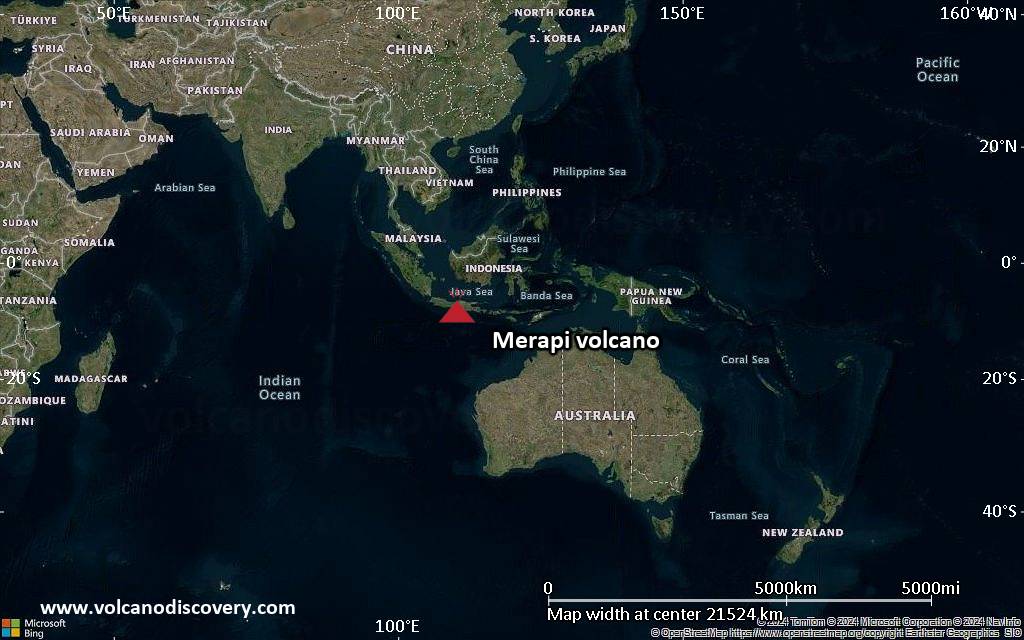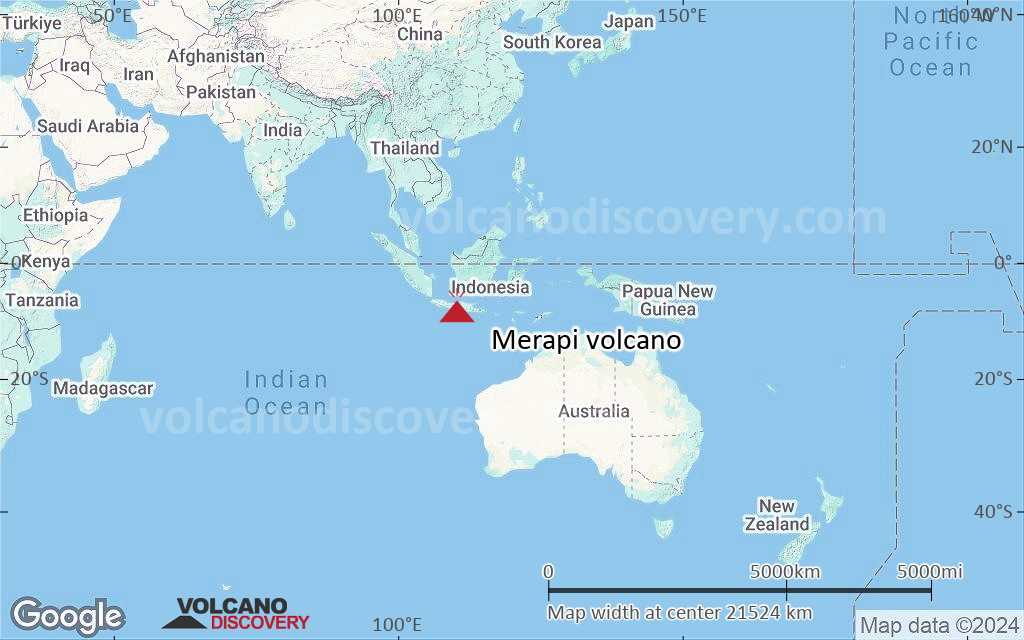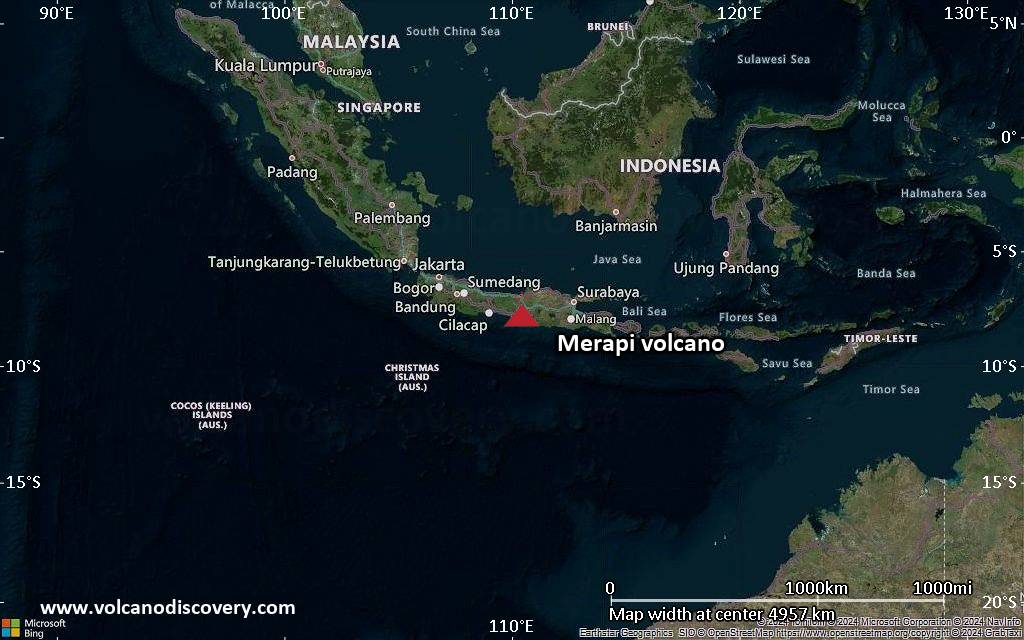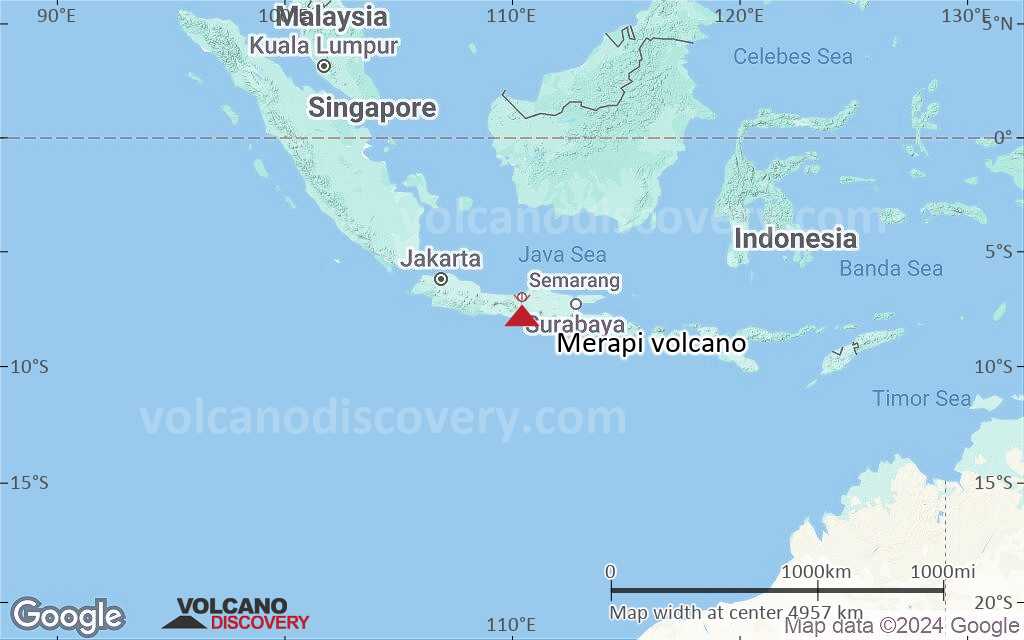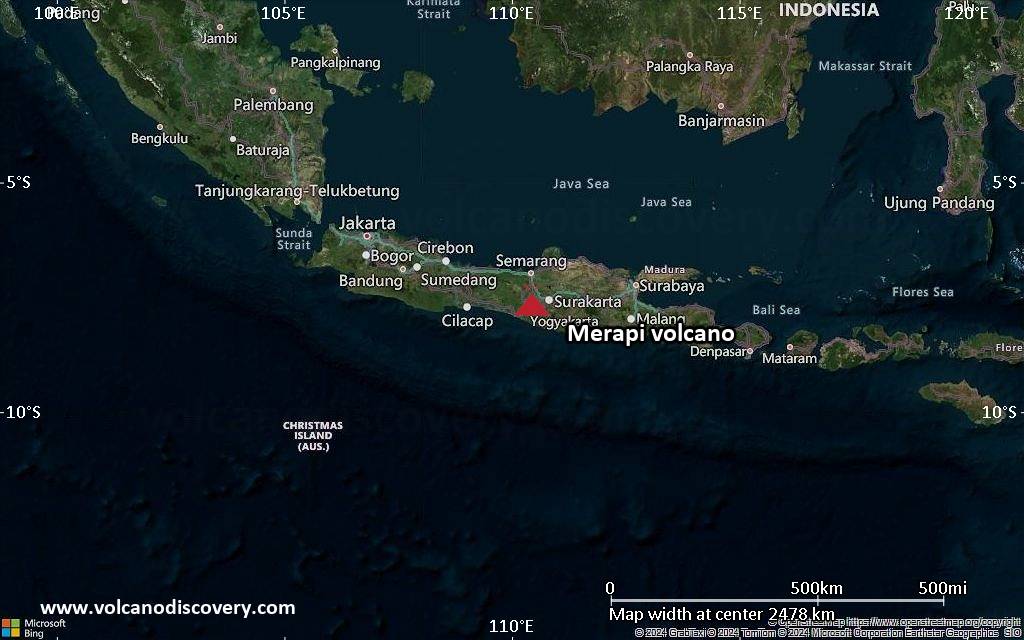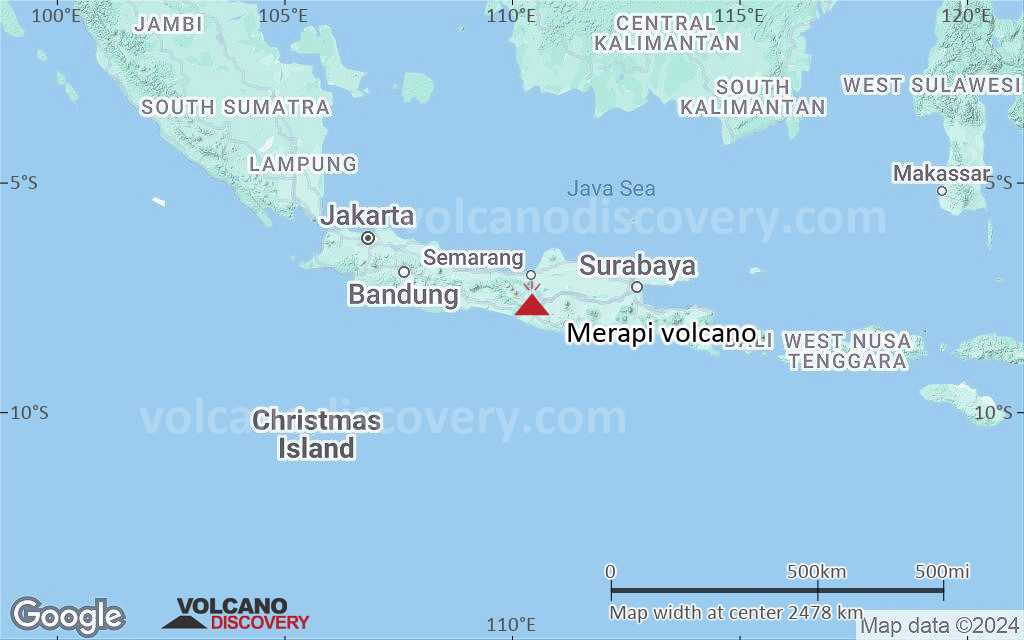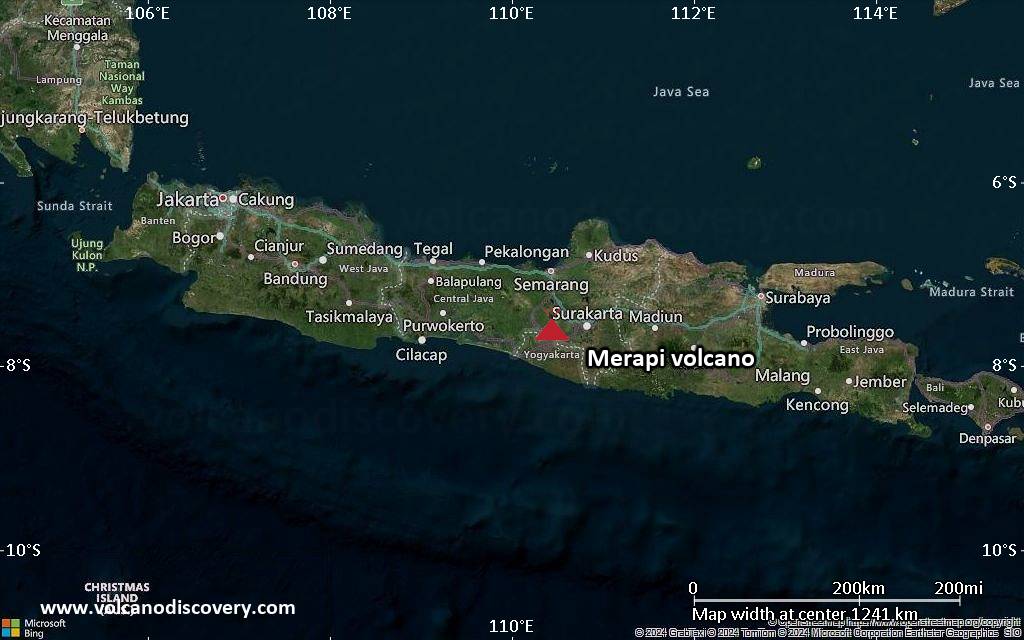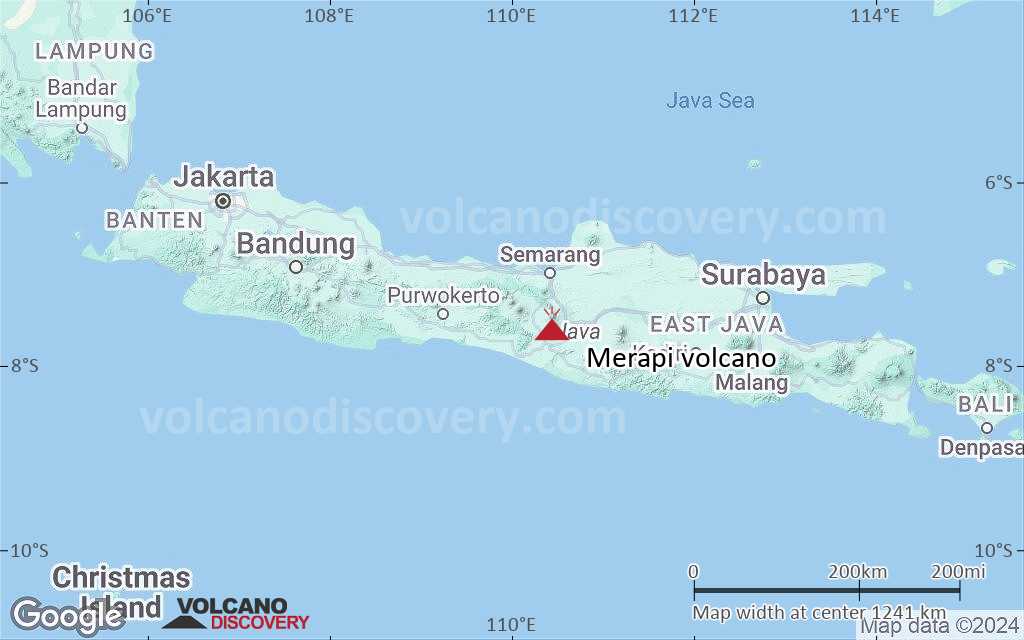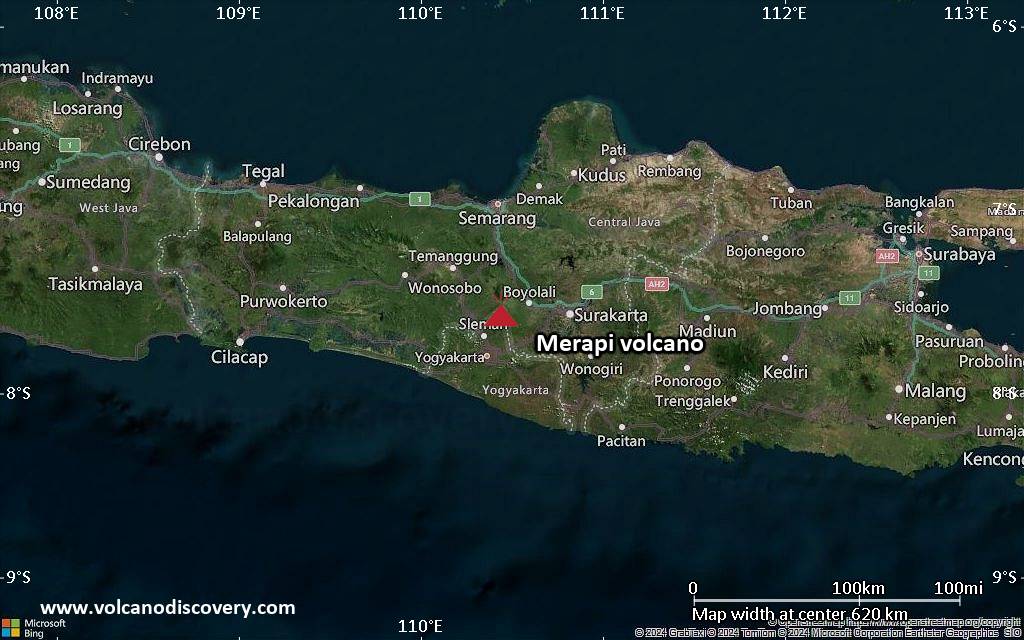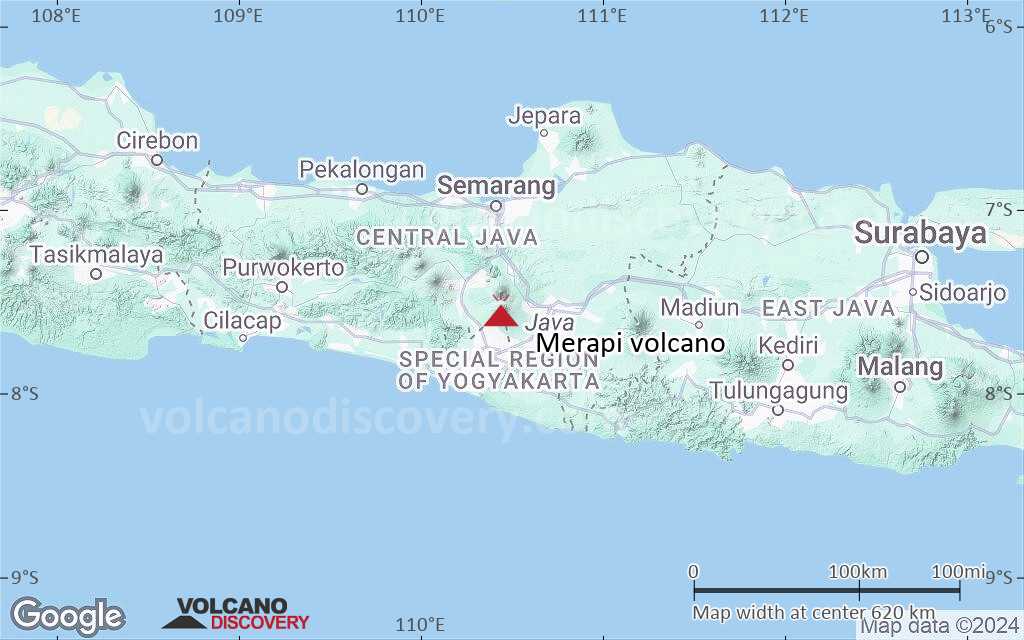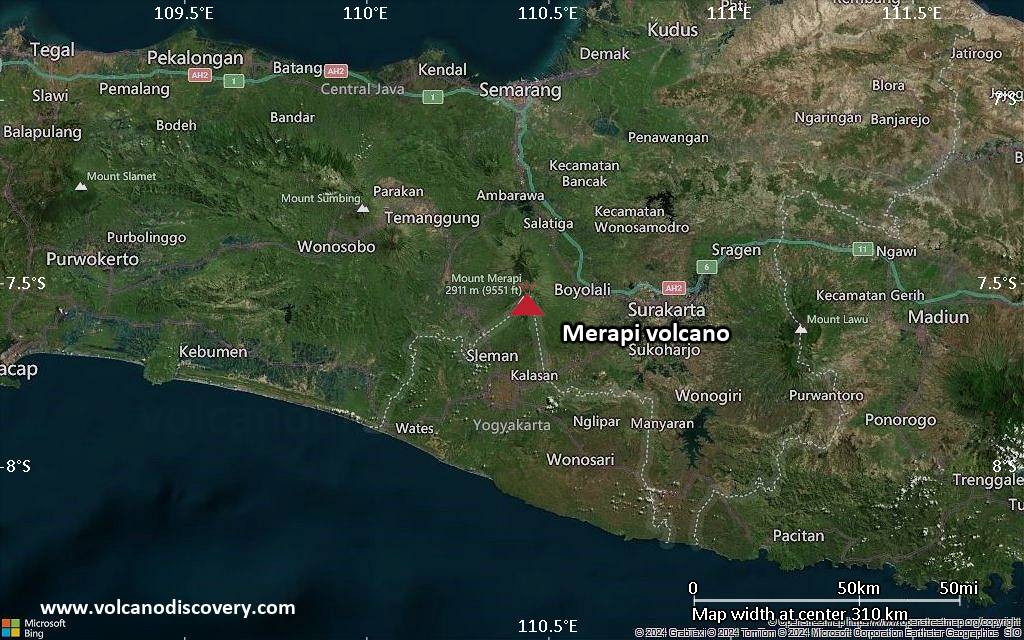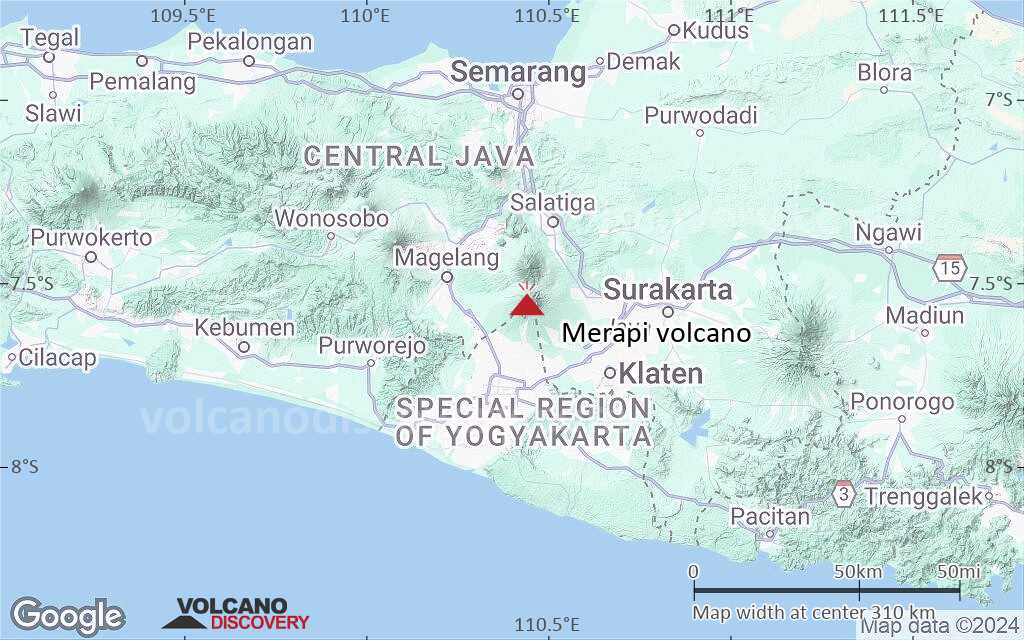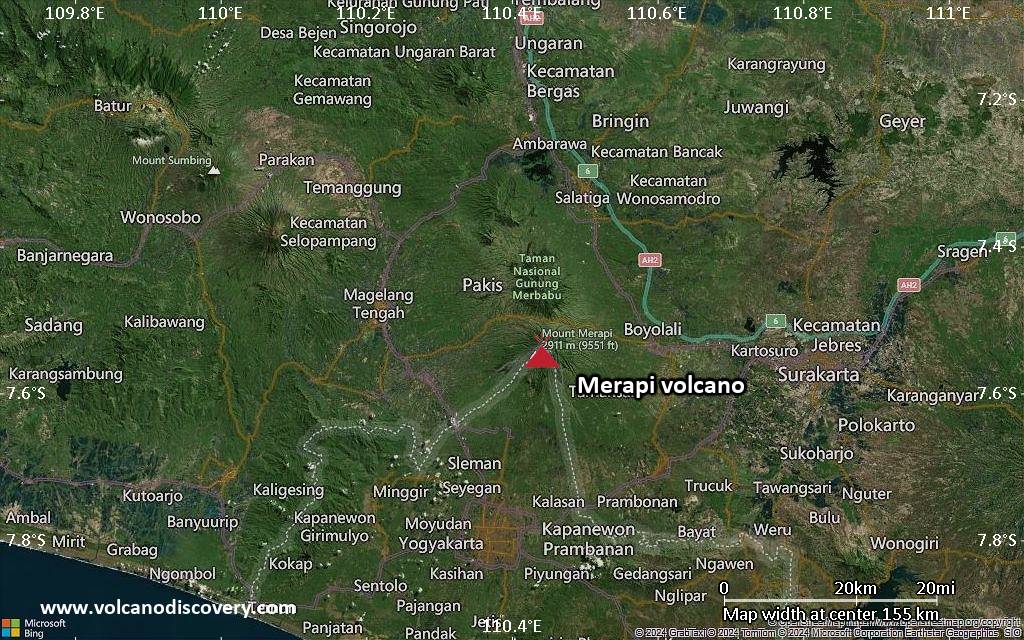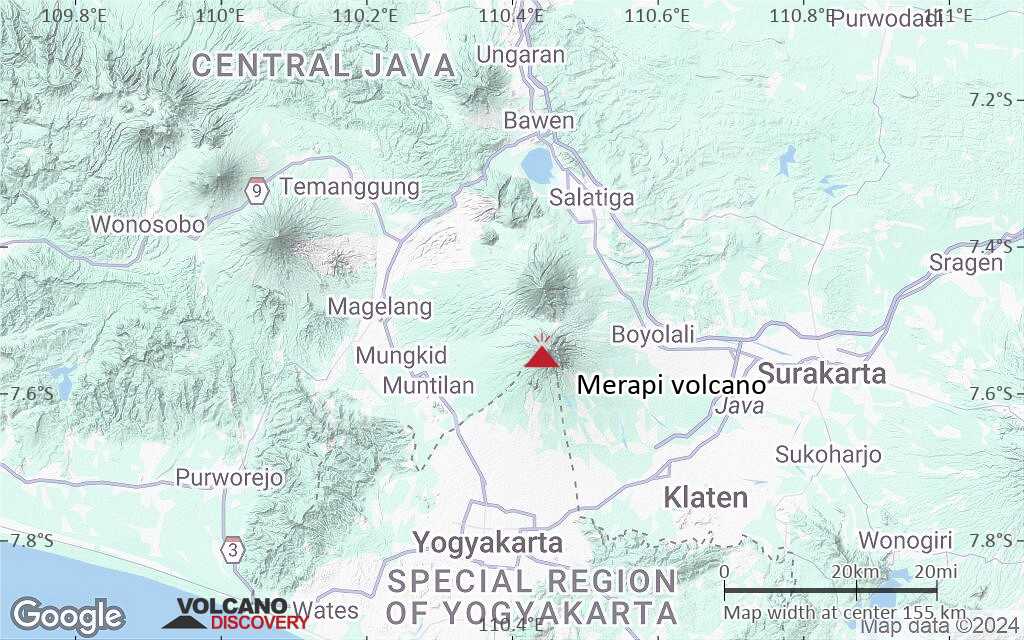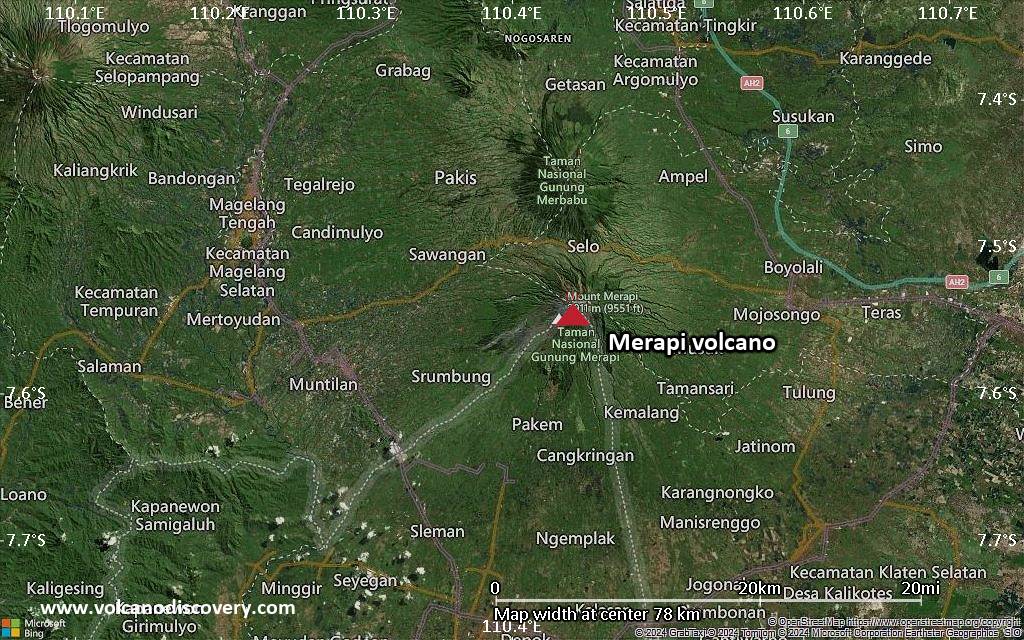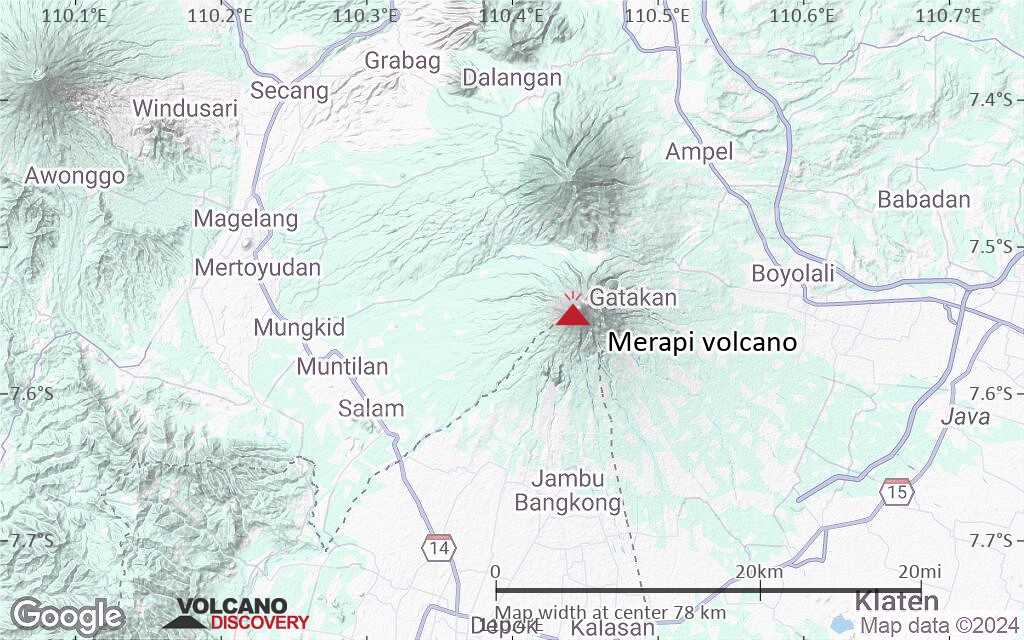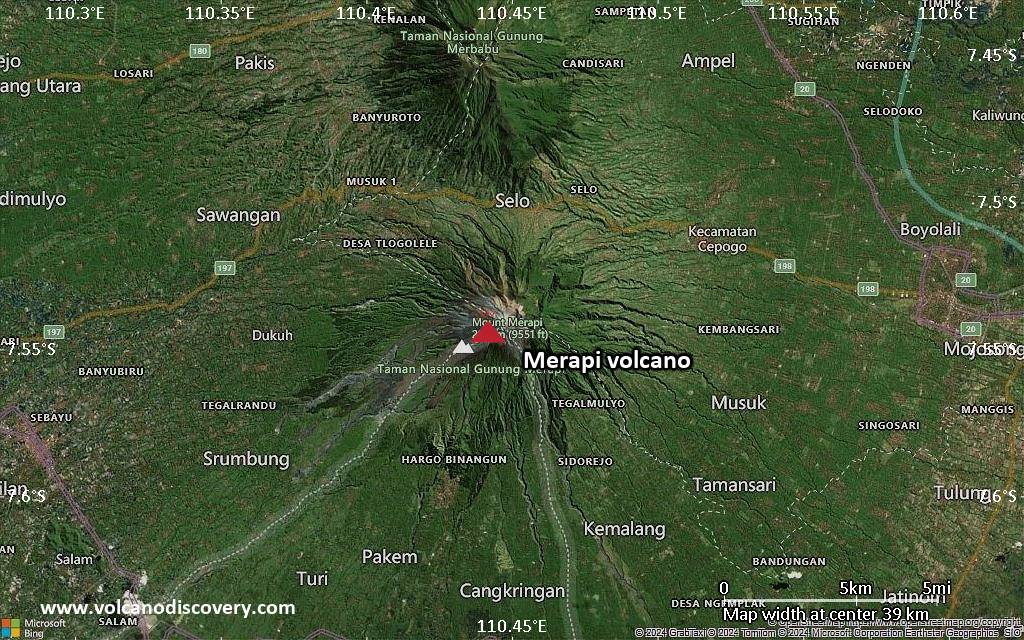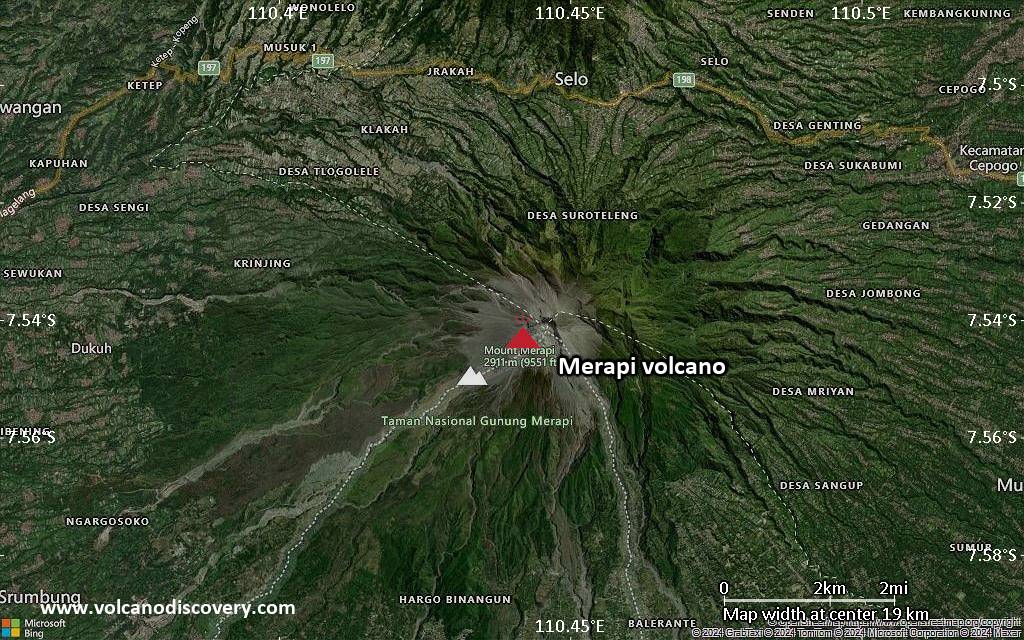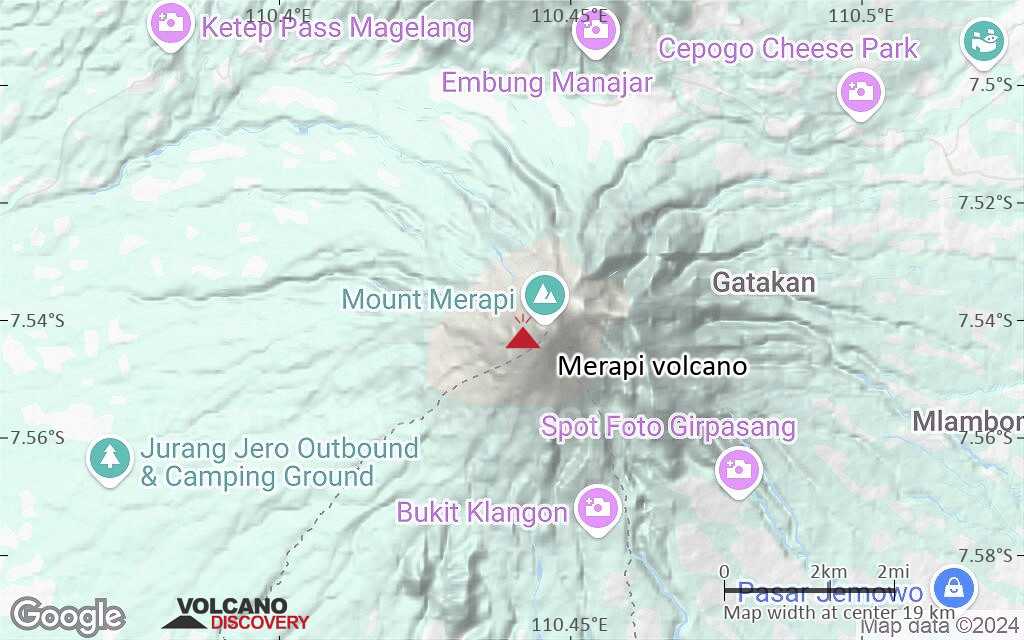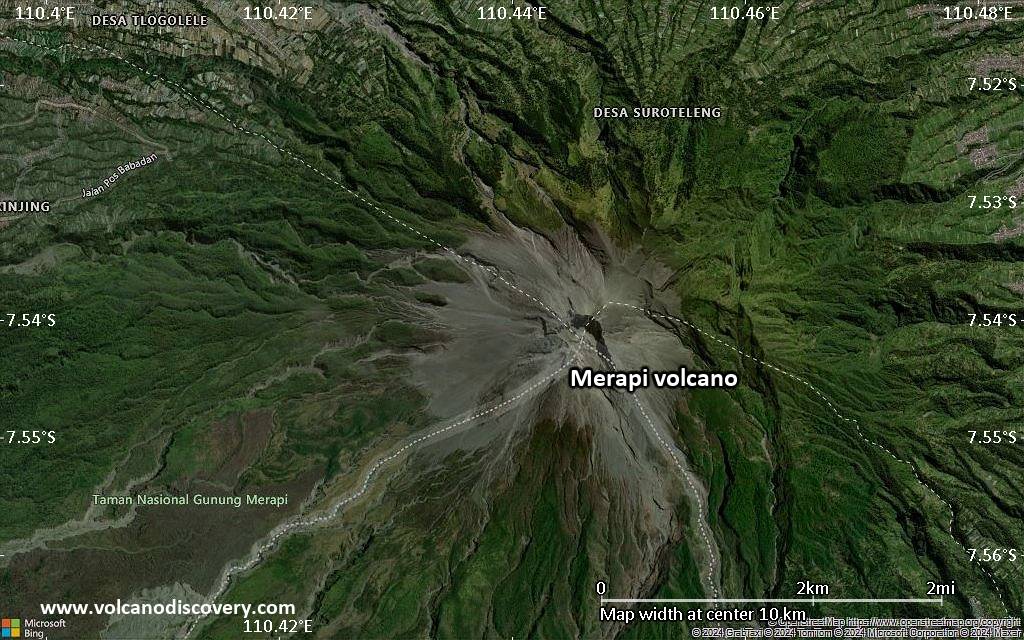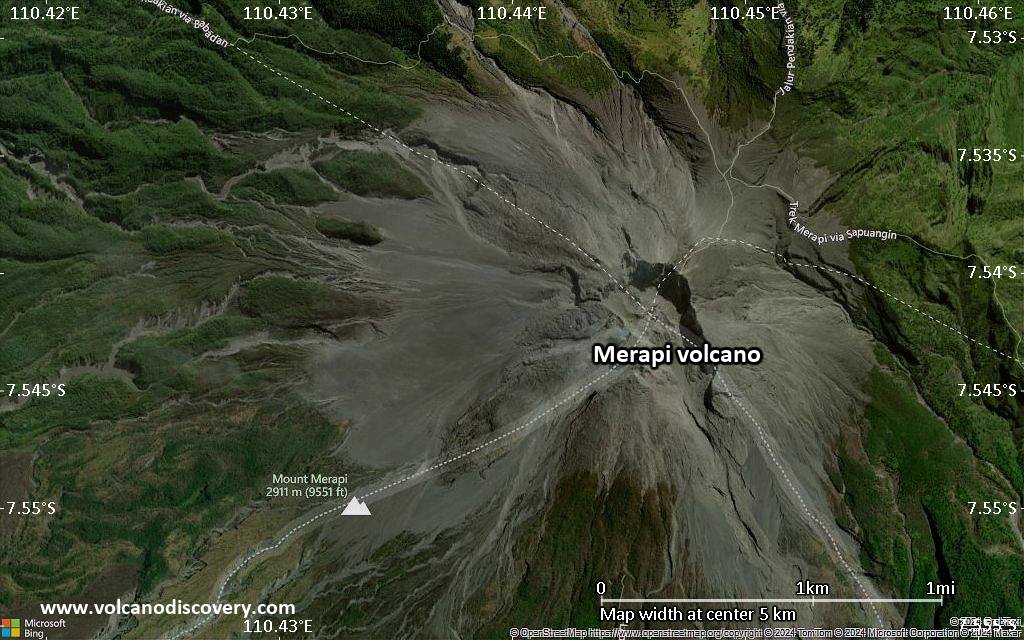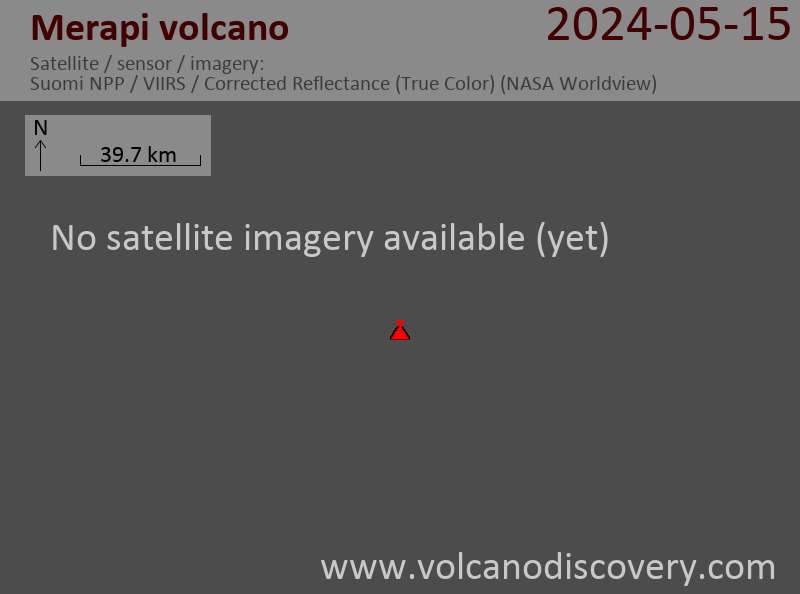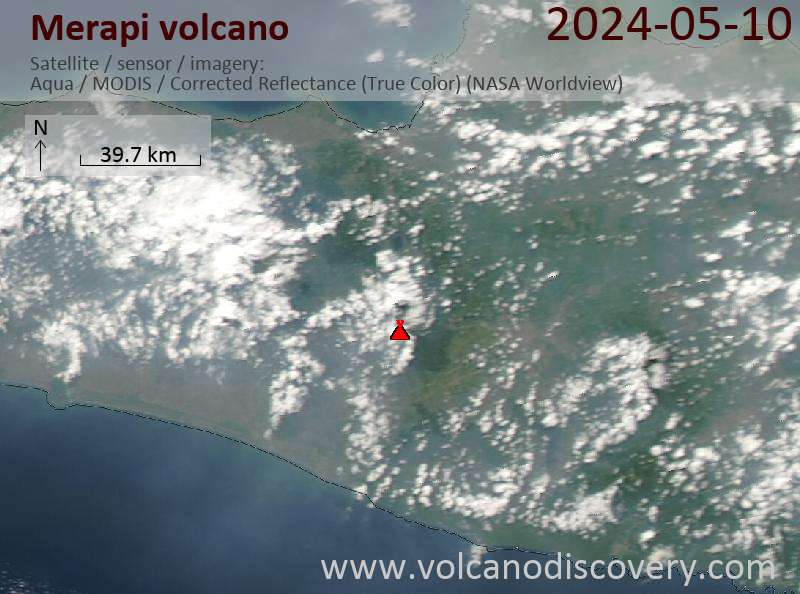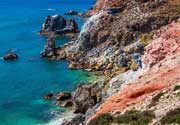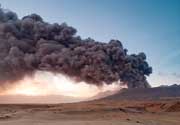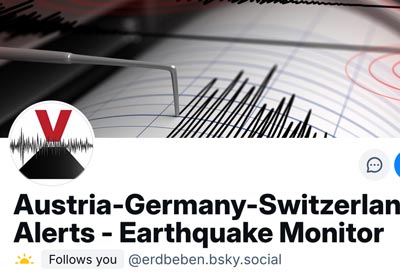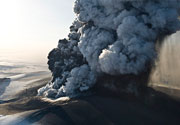Merapi Volcano
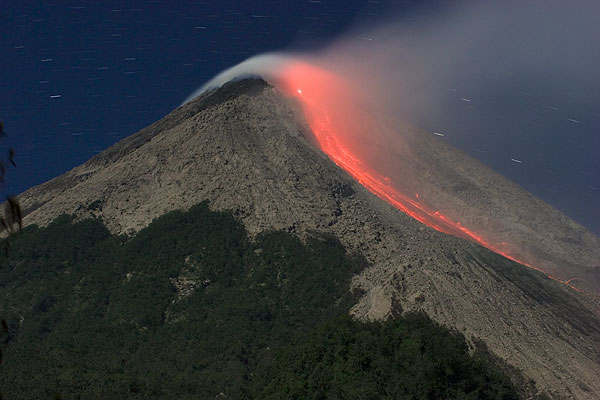
Merapi, a steep stratovolcano north of Central Java's capital Yogyakarta, is Indonesia's most active volcano. It erupts on average every 5-10 years and is feared for its deadly pyroclastic flows - avalanches of hot rocks and gas that are generated when parts of new lava domes constructed during eruptions in the summit crater collapse and slide down the mountain's steep flanks.
The name "Merapi" from old Javanese language means "the one making fire" is a popular name for volcanoes: another volcano with the same name Merapi is in the Ijen Massif in East Java and similarly called volcano "Marapi" lies on Sumatra Island.
Merapi volcano eruptions: 1548, 1554, 1560, 1584, 1586(?), 1587, 1658, 1663, 1672, 1678, 1745, 1752, 1755, 1768, 1791, 1797, 1807, 1810, 1812-22, 1822-23, 1828, 1832-36, 1837-38, 1840, 1846, 1848(?), 1849, 1854(?), 1861, 1862-64, 1865-71, 1872 (large vulcanian-subplinian eruption VEI:4) , 1872-73, 1878-79, 1883-84, 1885-87, 1888, 1889, 1891-92, 1893, 1894, 1897, 1902, 1902-04, 1905, 1906-07, 1908, 1909-13, 1915, 1918, 1920-21, 1922, 1923(?), 1924, 1930-31, 1932, 1933-35, 1939-40, 1942-45, 1948, 1953-58, 1961, 1967-1970, 1971(?), 1972-85, 1986-90, 1992-2002, April-July 2006, Oct 2010-2011 Feb, 2018 (May), late 2018 - 2020, Dec 2020 - ongoing
Latest nearby earthquakes
| Date and Time | Mag / Depth | Distance / Location | |||
|---|---|---|---|---|---|
Background
Merapi dominates the landscape immediately north of the city of Yogyakarta in one of the world's most densely populated areas. Merapi is the youngest and southernmost of a volcanic chain extending NNW to Ungaran volcano. The steep-sided modern Merapi edifice, its upper part unvegetated due to frequent eruptive activity, was constructed to the SW of an arcuate scarp cutting the eroded older Batulawang volcano.Pyroclastic flows and lahars accompanying growth and collapse of the steep-sided active summit lava dome have devastated cultivated lands on the volcano's western-to-southern flanks and caused many fatalities during historical time.
Since 1953, activity has been characterized by extrusion of lava into the summit crater, with periodic lava dome collapse and nuée ardente formation. Summit lava dome growth has continued since the 1969 gas explosion. It is monitored from the Merapi Volcano Observatory (MVO) in Yogyakarta.
Merapi Volcano Photos
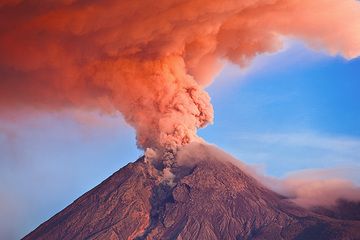
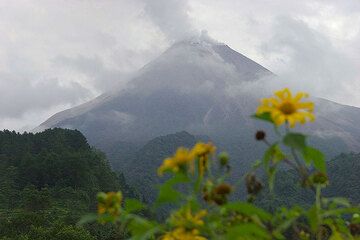
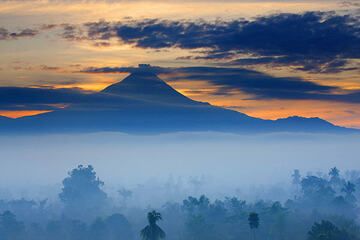
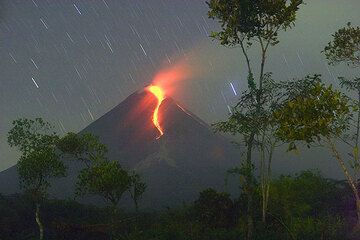
(Photo: Tom Pfeiffer)
Significant volcanic eruptions: Merapi volcano
Additionally, there are 7 uncertain or discredited eruptions from Merapi volcano.
| Date | Note | VEI | Deaths | Damage | |
|---|---|---|---|---|---|
Historical obs./docs. | 1 | ||||
Historical obs./docs. | 3 | ||||
| 2017 Dec 18 (eruptive episode | Historical obs./docs. | 0 | 8 | Info | |
| Summit crater Historical obs./docs. | 3 | ||||
| Summit crater Historical obs./docs. | 3 | ||||
| Summit crater Historical obs./docs. | 1 | ||||
| 2013 Feb 12 (eruptive episode | Historical obs./docs. | 0 | 1 | light | Info |
| Summit crater Historical obs./docs. | 1 | ||||
| 2011 Jan 3 (eruption | Historical obs./docs. | 0 | 1 | light | Info |
| Summit crater Historical obs./docs. | 4 | ||||
| 2010 Oct 26 (eruption | Historical obs./docs. | 0 | 367 | very heavy | Info |
?? | Uncertain Eruption | ? | |||
Historical obs./docs. | 1 | ||||
| 2006 Jun 14 (eruption | Historical obs./docs. | 1 | 2 | Info | |
| NW of 1984 lava dome Historical obs./docs. | 2 | ||||
| 2001 Aug 5 (eruption | Historical obs./docs. | 2 | 2 | Info | |
| 2000 Nov (eruption | Historical obs./docs. | 2 | 1 | Info | |
| 1997 Jan 14 (eruption | Historical obs./docs. | 2 | 6 | Info | |
| 1994 Nov 22 (eruptive episode | Historical obs./docs. | 3 | 60 | Info | |
Historical obs./docs. | 2 | ||||
| 1986 Oct 15 (eruption | Historical obs./docs. | 2 | 1 | Info | |
Historical obs./docs. | 2 | ||||
| 1976 Nov 25 (eruption | Historical obs./docs. | 2 | 29 | Info | |
| 1974 Oct 22 (eruption | Historical obs./docs. | 2 | 9 | moderate | Info |
?? | Uncertain Eruption | 1? | |||
| Upper Batang breach (2600 m) Historical obs./docs. | 2 | ||||
| 1969 Jan 7 (eruption | Historical obs./docs. | 2 | 3 | Info | |
| 1962 Oct (eruptive episode | Historical obs./docs. | 0 | 2 | Info | |
Historical obs./docs. | 3 | ||||
| 1961 May 8 (eruption | Historical obs./docs. | 3 | 6 | moderate | Info |
Historical obs./docs. | 2 | ||||
| 1953 Mar 23 (eruption | Historical obs./docs. | 3 | 64 | moderate | Info |
Historical obs./docs. | 2 | ||||
Historical obs./docs. | 2 | ||||
Historical obs./docs. | 2 | ||||
Historical obs./docs. | 2 | ||||
Historical obs./docs. | 1 | ||||
| 1932 Feb (eruption | Historical obs./docs. | 0 | 1-50 (*) | Info | |
Historical obs./docs. | 3 | ||||
| 1930 Dec 18 (eruption | Historical obs./docs. | 3 | 1,369 | heavy | Info |
Historical obs./docs. | 1 | ||||
?? | Uncertain Eruption | ? | |||
Historical obs./docs. | 1 | ||||
Historical obs./docs. | 2 | ||||
| 1920 Jul 25 (eruption | Historical obs./docs. | 3 | 33 | Info | |
Historical obs./docs. | 1 | ||||
Historical obs./docs. | 1 | ||||
| West dome Historical obs./docs. | 1 | ||||
Historical obs./docs. | 1? | ||||
| Summit and upper east flank (2600 m) Historical obs./docs. | 2 | ||||
Historical obs./docs. | 2 | ||||
Historical obs./docs. | 2 | ||||
| 1902 Dec (eruption | Historical obs./docs. | 2 | 16 | Info | |
Historical obs./docs. | 1 | ||||
Eruptions of Merapi volcano
After a period of 5 years of relative calm, a new eruption started in April 2006. A new lava dome was built on top of the lava dome of 1998-2001, powerful pyroclastic flows descended the SW, S and SE flanks in late May and June. Tens of thousands of people were evacuated during the peak of the eruption in late May-mid June. A particularly powerful pyroclastic flow killed two workers trapped inside a shelter that was overrun by a flow on 14 June. ...more info
On 27 May 2006 a magnitude 6.3 tectonic earthquake near Yogyakarta caused 5750 fatalities, around 40,000 injuries and destroyed large sections of Yogyakarta and sourrounding towns, leaving more than 600,000 people homeless.
The earthquake was caused by the collission of the Australian and Sunda tectonic plates, forming a subduction zone west of the coast of Java.
Activity increased in January 2001, lava effusion rates were at high levels and feeding frequent pyroclastic flows. On 31 January pyroclastic flows occurred continuously, reaching up to 3.5 km from the summit, flowing mainly to the SSW, but started also to descend on the SW and W flanks of the mountain into the Senowo and Bebeng Rivers.
On 10 February 2001, a large section of the 1998 lava dome collapsed and triggered a serious of pyroclastic flows that reached 7 km distance from the crater, travelling SSW into the Sat River. Significant ash fall from the eruption occured up to 60 km E of the volcano.
After this event, activity decreased sharply, but continued at lower levels through much of 2001.
Eruptive activity increased steeply during the period of 26 December 2000-22 January 2001. On 14 January, 29 pyroclastic flows traveled down the volcano's SSW and SW flanks and reached up to 4 km from their source. During the week, lava avalanches and pyroclastic flows occurred with an average interval of 0.5-1 hours.
Seismic activity and rockfalls from the lava dome at the summit increased again in June 1998 and peaked between 11-19 July when 128 rock avalanches and pyroclastic flows were recorded descending the Lamat, Krasak/Bebeng and Boyong rivers on the SW and SSW flanks of the volcano.
Activity decreased, but the volcano remained active through 1999 and 2000, when intense degassing, minor explosions, intermittend glow at the summit and occasional rockfalls were recorded.
The activity that had started in 1994 continued through 1995 and increased again starting from August 1996, when explosions and pyroclastic flows became more frequent and large. On 9 August, a pyroclastic flow traveled 3.5 km from the summit down the SSW flank and reached the upper parts of the Krasak and Boyong rivers. No casualties were reported. An explosion on 13 September created an ash cloud of ca. 4 km height above the summit.
Activity peaked on 31 October when 17 pyroclastic flows were recorded. They reached a maximum of 3 km distance and touched the upper valleys of Bebeng, Krasak, Boyong, and Kuning rivers on the SSW and SW flanks.
Pyroclastic flows decreased on 1st November and the eruption ended on 2nd November.
A major collapse of the growing lava dome on November 22 1994 produced a large pyroclastic flow that ran 7.5 km on the S flank, overrunning Kaliurang village and killed at least 41 people. 6000 people were evacuated. ...more info
A new lava dome grew in late January and early February 1992 and generated pyroclastic flows travelling up to 4 km to the SW flank. ...more info
By the end of May 1968 a viscous lava flow had been extruded from the collapse scar of the Oct 1967 dome collapse and reached 875 m SW on the upper slope. Rockfalls and small pyroclastic flows from the lava flow were frequent in June through August (up to ca. 1500 per month) and died out in September. New activity began in October.
A new lava dome was built in April 1967. Dome collapses in October 1967 generated pyroclastic flows into the Batang river valley on the SW side of the cone.
Merapi Volcano FAQ
+When was the last eruption of Merapi volcano?
The last confirmed eruption of Merapi began in 2020 and is continuing (as of June 2025).
+How often does Merapi volcano erupt?
Since 1548 AD, Merapi volcano has had at least 75 historically documented eruptions. This means that it erupts on average every 6.4 years.
Many eruptions of Merapi have lasted more than one year. In total, the volcano has been in eruption during 156 out of 477 years until now. In other words, Merapi has been active at least one in 3.1 years on average. Note that this value is likely an underestimate, because the known history of eruptions from Merapi is likely incomplete, especially further back in time.
+How active is Merapi volcano at present?
Merapi volcano is extremely active: Since 1900, it has been frequently active, showing eruptive activity during 86 years out of 126 as of now. The latest eruption is still continuing at present.
+When was the largest eruption of Merapi volcano?
The largest eruption of Merapi volcano in historic times occurred in 2010. It ranks as a sub-plinian eruption with a magnitude 4 on the VEI (Volcanic Explosivity Index) scale.
Latest satellite images
Price 3180 €
Price 3120 €
Price 1750 EUR (7d) / 2480 EUR (10d)
Merapi Volcano Maps
